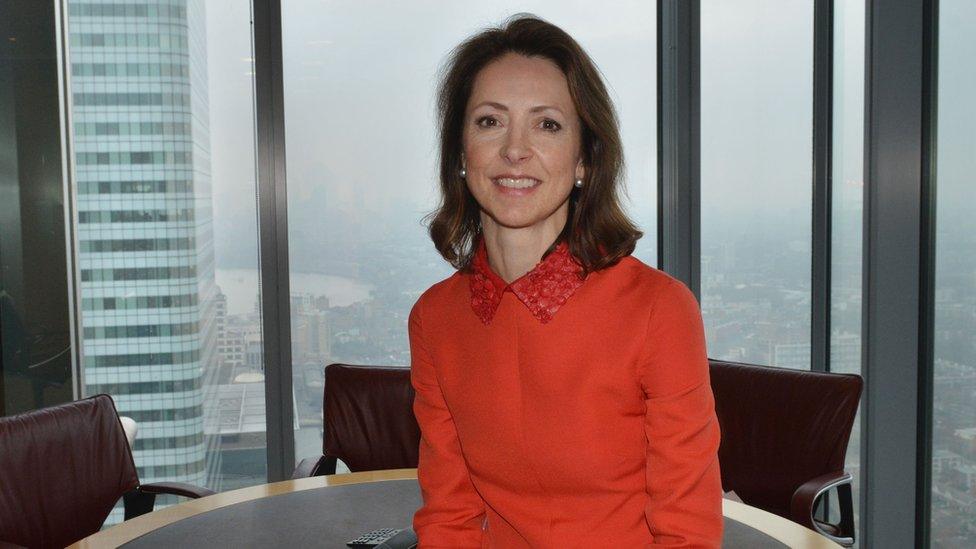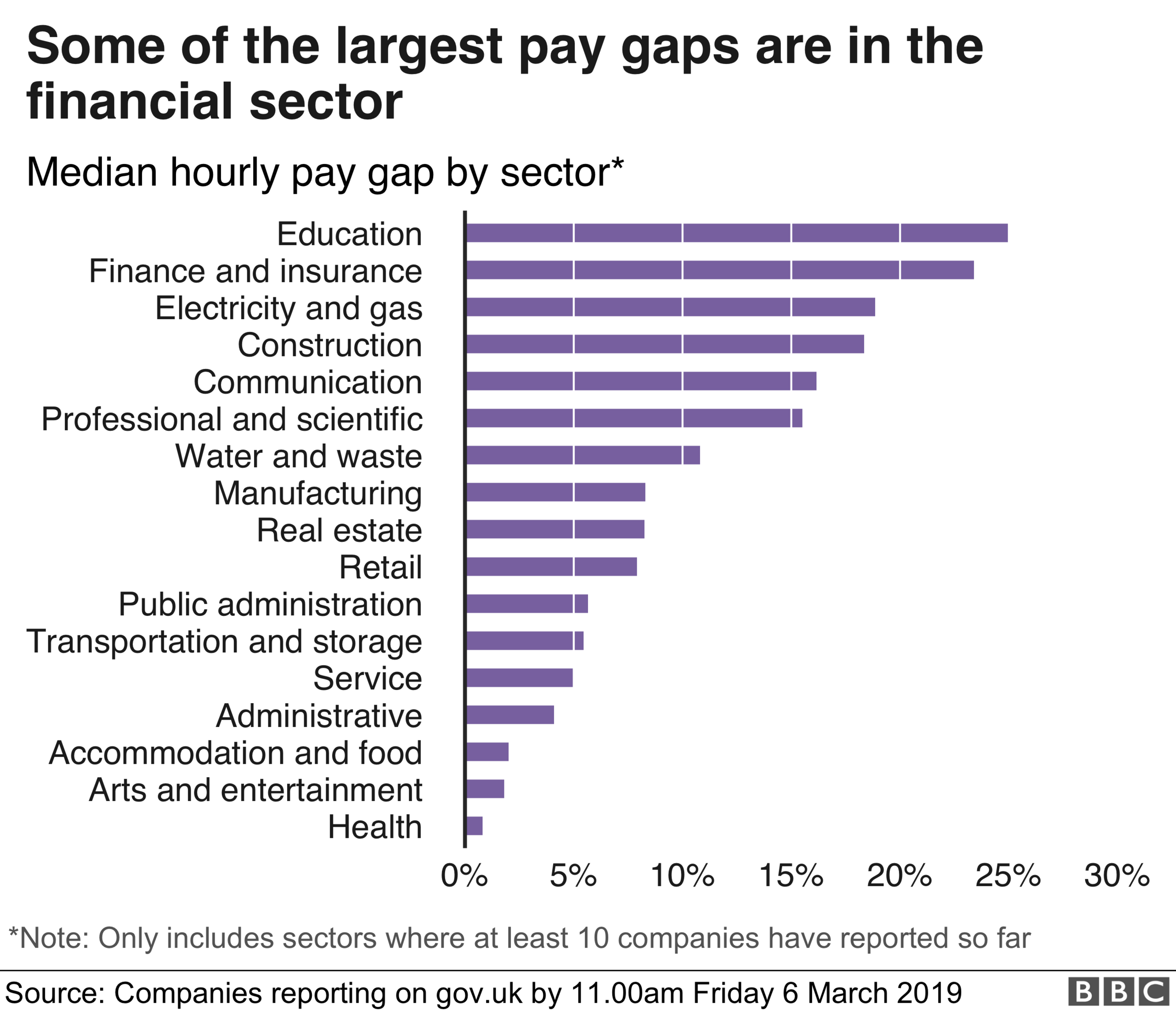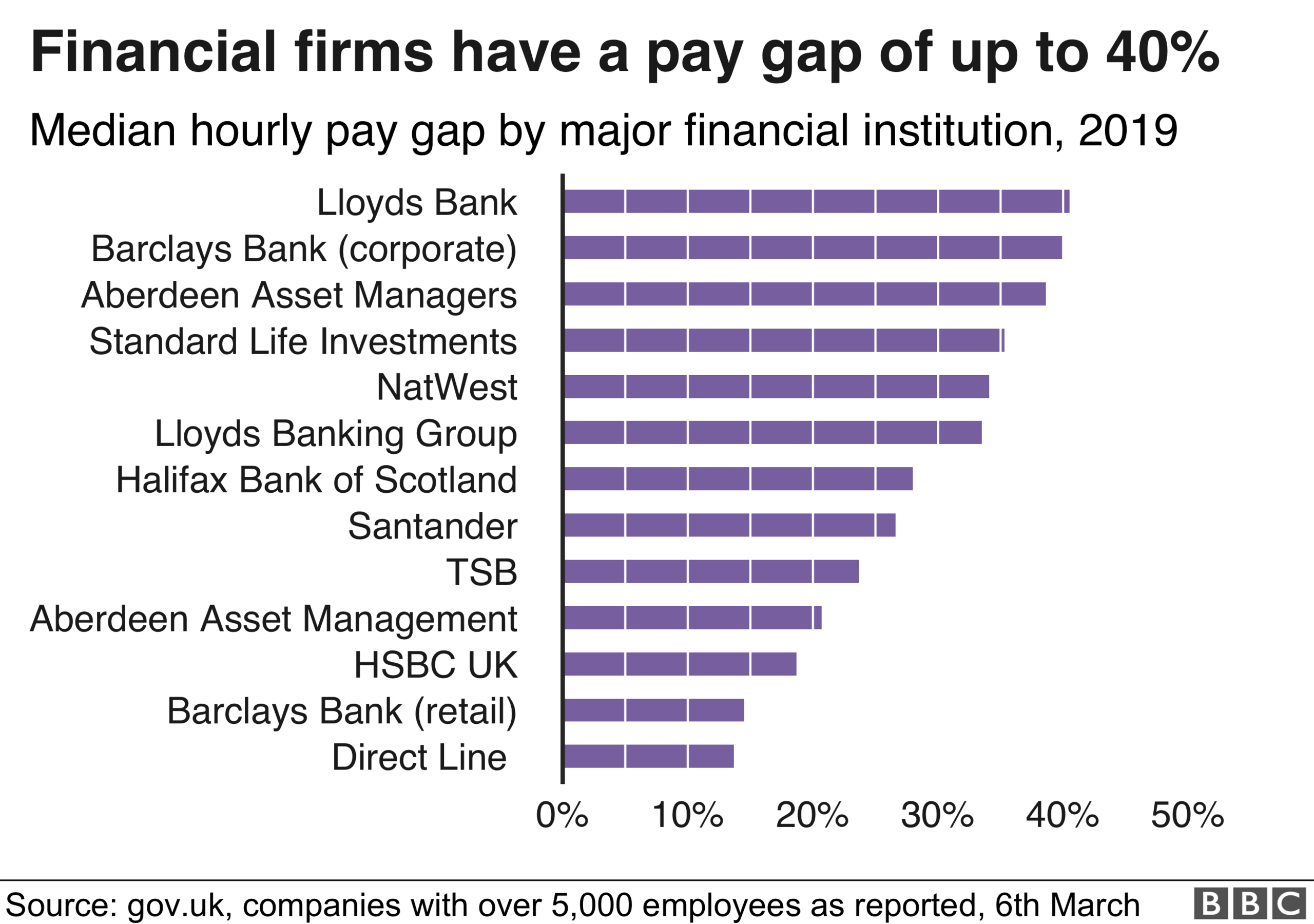HSBC's gender pay gap hits 47% as City split widens
- Published

Dame Helena Morrissey says more needs to be done
Many financial firms are paying the average man almost 25% more than the average woman, with HSBC posting an overall pay gap of 47.8%.
It is the third year UK organisations with more than 250 employees have been legally required to publish a snapshot of their gender pay gap, external.
Of the financial and insurance firms reporting so far, the gap has risen to 23.1%, from 22.2% two years ago.
Across all employees and sectors, the ONS estimates the gap is 17.3%., external

The gender pay gap is the difference between average hourly earnings for men and women across an organisation. So far, only a quarter of financial firms have reported their figures, less than one month before the deadline.
The BBC looked at a company's median pay gap - that is the difference in pay between the middle-ranking woman and the middle-ranking man.
Which banks have cut their pay gap?
HSBC says its pay gap - averaged out across its eight divisions and 40,000 strong workforce - was 47.8% in 2019, almost identical to a year earlier.
The main driver was fewer women in high paid senior leadership roles and more women working in junior positions, it said.
"It will take time to redress the imbalance and the results of our work today may not fully be realised until today's pipeline of new joiners becomes tomorrow's business leaders," the bank said in its supporting statement.
Between 2017 and 2019:
Lloyds Bank and Santander's UK retail operations have closed their gap by more than 2% , but are still above the sector average at 40.5% and 26.6% respectively
Co-op Bank's gap remained at 22.6% and Barclay's retail operation had a small increase to 14.5%
Both the investment firm Aberdeen Asset Management (which has since merged with Standard Life) and HBOS reported 1.6% increases.
Reporting for the first time, NatWest posted a gender pay gap of 34.1% while the gap at HSBC's UK retail arm was 18.7%

'A blunted instrument'
Dame Helena Morrissey, one of the City's most high profile women, and founder of the Diversity Project, says some firms are merely complying with the law, with "woolly or non-existent" plans to improve.
"I think the initial year of naming and shaming has become a blunted instrument because so many have such a bad [gender pay gap] number," she said.
"Personally I feel it is very hard to engineer the closing of the gap, because even if you attract women in, if they are not happy in the industry they will leave."

Average pay gaps at city firms have grown to 23.1% since compulsory reporting was brought in two years ago
Analysis of financial firms shows the average gender pay gap for bonuses is 37.7%.
This is an increase from 35.3% two years ago.
Aberdeen Asset Manager, Barclays' commercial arm, NatWest and Standard Life Investments were all paying out bonuses that are over 50% higher for men, on average.
Bonus payments are recorded separately, but can form a substantial part of employee salaries at financial institutions.
Ann Cairns, executive vice-chair of MasterCard, is global co-chair of the 30% Club, which aims to boost the number of women in senior leadership.
She says that on the ground, she sees companies are starting to take their pay gaps seriously.

MasterCard's Ann Cairns (third from left) says corporate culture can't be changed overnight
"It's more transparent out there at the moment and it affects whether people want to work for you - it affects your perception in the market, and investors are starting to pay a lot more attention to it," she says.
"There are probably firms out there who think 'I really care, but I don't know how to change and it takes a lot of time and effort'. You are not going to change the corporate culture or mix of people overnight.
"We are not pro quota, because you can make people do something, but if you haven't changed the underlying culture I don't think anybody feels good about that."
But she adds "if you can't change the trajectory in 3-5 years then you have to start asking yourself questions. This whole thing that you can't find qualified women - I don't think that's true".

Understanding the terminology
Median pay gap
The median pay gap is the difference in pay between the middle-ranking woman and the middle-ranking man.
If you line up all the men and women working at a company in two separate lines in order of salary, the median pay gap will be the difference in salary between the woman in the middle of her line and the man in the middle of his.
Mean pay gap
The mean pay gap is the difference between a company's total wage spend-per-woman and its total spend-per-man.
The number is calculated by taking the total wage bill for each and dividing it by the number of men and women employed by the organisation.
Pay gap v equal pay
The gender pay gap is not the same as unequal pay.
Unequal pay is giving women less than men for the same work. That has been against the law since the Equal Pay Act was introduced in 1970.
A company's gender pay gap can also be caused by other things, for example fewer women in senior or highly-paid roles or more women in part-time jobs.